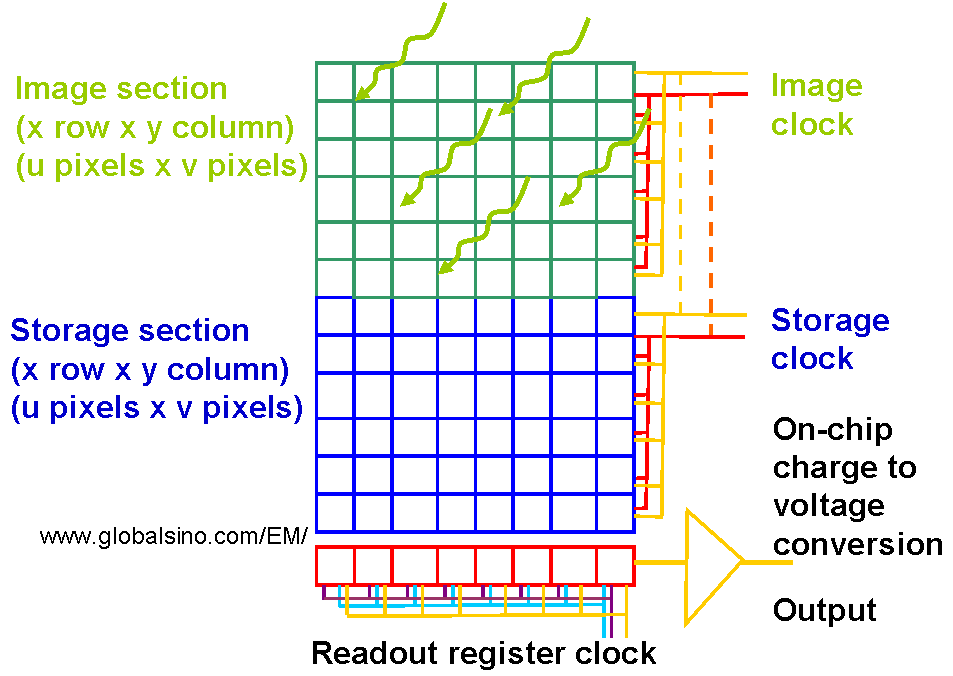|
|
Full-Frame Transfer CCD
- Practical Electron Microscopy and Database -
- An Online Book -
|
|
https://www.globalsino.com/EM/
|
|
This book (Practical Electron Microscopy and Database) is a reference for TEM and SEM students, operators, engineers, technicians, managers, and researchers.
|
=================================================================================
A full-frame transfer CCD as shown in Figure 3969 contains two-part identical arrays, namely, one part of the parallel array is used as a photosensitive region (uncovered portion of the array) and the other as a temporary storage region (covered portion of the array). The storage region is shielded from light. The incoming photons are allowed to fall on the photosensitive array during exposure time. Therefore, this part of the array collects charges, meaning that the light signal is integrated on the photosensitive region, and then the charges are quickly transferred to the storage region. While transferring charges from the photoactive array to the storage array, a shutter (e.g. shutter in TEM) closes the photosensitive area and blocks the light. After completing the charge transfer, the shutter opens and the photosensitive array begins exposing a new image, while simultaneously the previous image is being moved from the storage array to the charge-to-voltage converter and output amplifier. Once the new exposure and readout are completed the newly accumulated charges are very rapidly moved from the photosensitive region to the emptied storage array. Afterwards the cycle can be repeated. This is termed the "frame transfer".

Figure 3969. Schematic illustration of full-frame transfer CCD. The storage section is shielded from illumination.
|
=================================================================================
The book author (Dr. Liao) welcomes your comments, suggestions, and corrections, please click here for submission. You can click How to Cite This Book to cite this book. If you let Dr. Liao know once you have cited this book, the brief information of your publication will appear on the “Times Cited” page. This appearance can help advertise your publication.
|
|
